
We’re journeying into the myths of Mars. Mars, the red planet that sits “behind” Earth and in “front” of the asteroid belt, has captivated humanity for a very long time. Because astrology’s intrinsically woven into astronomy, mythology, history, and culture, this Myths of Mars article delves into all of that! In Western astrology, the planet Mars is directly attached to the ancient Roman god Mars, and, tangentially, the ancient Greek god Ares. I’m excited to share with you historical information about the ancient Roman god Mars and how this culture viewed the god Mars very differently than you might think. (In a different article, I’ll share the myths of Ares with you too.)
Mars is the traditional ruler of Scorpio (as well as Aries). I’ve also been curious regarding how Mars shows up in Scorpio. Scorpio, the eighth sign of the zodiac, is viewed as the deep watery sign of the psyche and emotional depths. It carries watery associations to subterranean waters, lakes, glaciers, and the hidden water of caves as well as mystery, sanctuary, privacy, privacy to name a few. As you read this article, I invite you to ponder how this mythological information may inform how you think about Mars and Scorpio.
As you may know, all over the world, the visible planets with their regular movement, patterns, and apparent immortality have been associated with cosmic powers, i.e., goddesses and gods. That association shows up in symbolism, myths, rituals, astroarchaeology, star patterns replicated in art forms, films, books, and, in modern astrology—links to psychology. However, most astrologers are not deeply informed about the myths and the other key associations. That’s understandable! The field of mythology is rarely taught in high school or college offerings (at least in the US).
MEANINGS OF MARS IN VARIOUS CULTURES
In the case of the planet Mars and the Roman god Mars, I often see modern astrological interpretations highlighting the following key words for Mar’s primary characteristics: “warrior,” “war,” “aggression,” and “anger.” While these interpretations may be true in certain astrological configurations, I personally find this emphasis on violence—and especially male violence—to be reductive. That said, some ancient Mesopotamian cultures, notably, Akkadian, Babylonian, and Assyrian, were highly involved in warfare. That focus on conquest and military/political wars then spilled over into the gods they worshipped. These ancient cultures transformed the underworld Sumerian god Nergel with his ties to death into the war, plague, and death god Nergal / Nirgal—the god of “inflicted death.”
The meanings of Mars in other cultures is/ was more complex. In the night sky, Mars consistently looks like a brighter red star. Its distinctive color has linked it to heat, fire, and blood through many cultures worldwide. These symbolic associations also link to energy, light, vitality, and redness. For example, In China, Japan, and Korea, Mars is known as the Fire Star: (Chinese) 火星 (Huǒxīng); (Japanese) 火星 (Kasei); (Korean) 화성 (Hwaseong). In Hindu languages, there are several names for Mars; names that actively associate Mars with redness, blood, fire, and iron. Hindu Mars is named Mańgala (the auspicious one—meaning the favorable one), as well as Raktavarna (whose color is like blood), Ańgāraka (red like embers), and Lohitanga (with associations to iron & iron oxide). And Mars’ planetary surface is deeply covered by iron oxide dust, thus giving much of the planet its dusky red coloring.
Iron is shaped and tempered by fire through the attentive craft of blacksmiths. Gods and goddesses who are crafty and crafting through working with fire and metals are often connected to Mars and the underworld Sun (winter Sun). Protected and inspired by this Mars and the subterranean Sun, human blacksmiths create(d) chain netting, farming tools, horseshoes, gates and fencing, cooking and hunting implements, wheel parts, ornamentation, jewellery and art as well as armor and weaponry. In the illustration below, Mangala/ Ańgāraka has bright blood-red skin, is richly clothed in gold (a much more malleable metal), carries a flame-haired image of himself and rides a ram—his chosen animal—which ties him to the constellation of Aries, the ram.
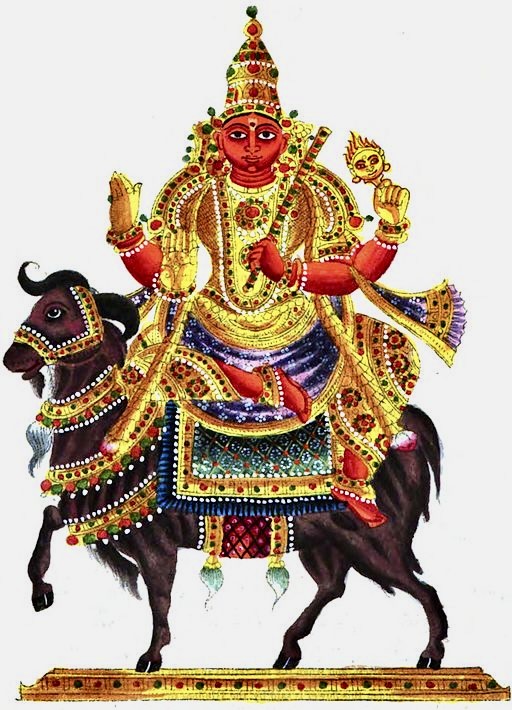
IN THE UNITED STATES
In modern American culture, Mars also has gathered a lot of secular symbolism especially in the genres of science fiction, other-world aliens, and space travel. Below is the fun and funny 1901 cover illustration for a dance song—A Signal from Mars. We see two Martian astronomers floating on books next to the very red planet Mars. They’re shining a bold light on Earth and gazing at it from a telescope. I think it’s great that the music is both a march and a two-step. The month of March is the start of Aries season (ruled by Mars). Also, the marching and two step align with vitality and action-oriented characteristics that I and many other astrologers associate with astrological Mars. I’m also delighted that E.T. Paul arranged the music.
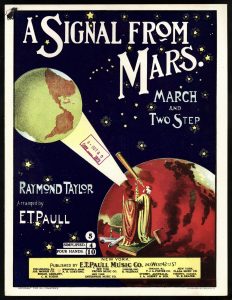
H.G. Wells’ 1898 novel “The War of the Worlds” imagined Martians who invaded the Earth to conquer it (reusing the theme of war of conquest). 40 years later, on Halloween night,1938, the actor and director, Orson Welles famously did a radio broadcast of The War of the Worlds which caused widespread panic and even, as the Smithsonian Magazine writes, “nationwide hysteria.” Many listeners thought the broadcast was news—thus a real invasion was occurring—rather than a radio play.
And here’s a look at a 1940’s cover of the science fiction magazine, Amazing Stories, shows the influence of World War II and the development of “atomic power” added to the fearmongering frenzy of alien Martians.
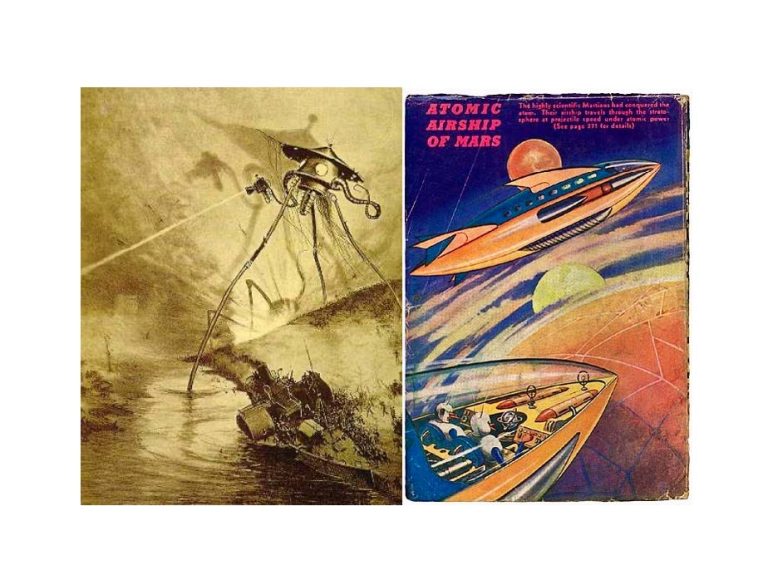
To round out our tour of American symbolism connected to Mars, I must mention the 2015 film, The Martian, starring Matt Damon. Interestingly, Matt Watney (Matt Damon’s character) who is presumed dead by the rest of the Ares III crew shortly after their arrival. The crew hastily retreat to their orbiting rocket Hermes and Watney becomes the lone astronaut stranded on Mars for four years. As a botanist, he’s deeply involved in experimenting with growing plants on Mars. I see symbolic meanings in Watney’s literal and symbolic underworld experience at death’s door along with the fascinating side-theme of trying to jump start agriculture by being Mars’ first farmer. He’s trying to use the Martian desert soil to grow potatoes, a leafy plant whose roots produce the watery vegetable underground. Amazingly, these mythic themes coincide with some of ancient Rome’s original attributes of their god Mars.
ANCIENT ROME AND THE GOD MARS
Seven out of our ten planets’ names are Latin words for goddesses and gods: Mercury, Venus, Mars, Jupiter, Saturn, Neptune, and Pluto. Latin is the ancient language of Rome. So, looking at Mars as the Roman god attached to the planet Mars is important context because so much of the world knows this planet by that name. Rome has a history of outsized influence—mainly through conquest (i.e., the Roman Empire) alongside Rome’s embrace of Christianity, specifically, Catholicism. As Cambridge University Roman scholar Mary Beard says, “Ancient Rome is important. […] Rome still helps to define the way we understand our world and […] after 2,000 years, it continues to underpin Western culture and politics, what we write and how we see the world, and our place in it.” I’ll add that in this context, Roman gods and history also influence how we interpret astrological meanings of the planets.
Okay, here we go into some of the history of Italy for background. Around 1600 BCE, Rome didn’t really exist yet. Instead, the geographical area of Rome harboured several hilly villages of the Latium peoples. Over the next eight centuries, these villages converged into a small boundaried Italian city-state. Historians call this city-state and time frame the Roman Kingdom period (c. 753 BCE). It was ruled by a handful of kings—notably the mythical Romulus. By 509 BCE, Rome became the Roman Republic. The Republic was messy and really fluid as far as creating a cohesive city, culture, peoples, and political structures. I’m giving you the dates of Rome’s evolution prior to becoming the Roman Empire so you can understand that Rome really emerged during the Iron Age (1100-700 BCE). Given it’s outsized influence on Western civilization, that’s not that long ago.
Important fact: ancient Romans didn’t create a body of mythologies about their gods and goddesses. Instead, they paid meticulous attention to getting their religious acts as perfect as possible. For the ancient Romans, meticulous rituals actively showed their devotion, attention, and offerings to the gods & goddesses. Their ritual practices were designed to impress the gods or goddesses and foster good relationships with them; the gods and goddesses reciprocated by showering the people with success, blessings, and special favor. It’s the actions of do ut des meaning, “I give that you might give.” This is an important distinction about ancient Romans and the tribes of peoples who lived around them.
ROMULUS, REMUS, AND THE FOUNDING OF ROME
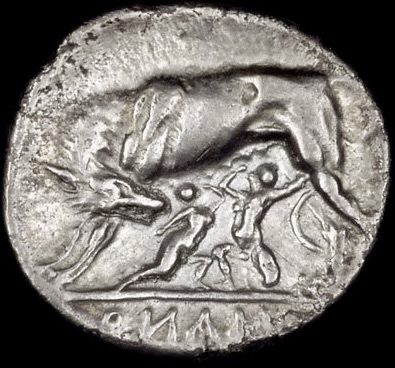
From the beginnings of Rome, Mars was viewed and revered as a primary Roman god because he was the immortal ancestor of the Roman people. Like many ancient cultures, the ancient Romans wanted to trace their peoples’ lineage to the immortal gods and goddess. They wanted to declare, “We’re direct and legitimate descendants of [insert the name of a powerful god or goddess]. Indeed, we are her family, his people!” Mars is the godly progenitor of the ancient Romans through the myth of Romulus and Remus.
The Romulus and Remus myth is a quilted myth—meaning it’s stitched together from pieces of several other myths such as:
- the Trojan War (see the Iliad),
- the mythic journey of the Trojan Aneas to Italy (see the Aeneid),
- who also brings along three sacred objects—
- the Palladium, an ancient sacred figurine of Athena Polis—guardian of founding cities, and kept in the Temple of the Vestal Virgins,
- the Penates and the Lares—household deities who protect each family’s provisions and possessions, and the fire of the family hearth,
- who also brings along three sacred objects—
- King Numitor, legendary Etruscan / Latin royalty in the mythical city of Alba Longa,
- Rhea Silvia, an Etruscan/Latin fire priestesses, one of the Vestal Virgins—who tend the eternal flame within their Roman temple,
- Mars and his sacred groves of trees and fields,
- Tiberinus, the god of the Tiber River. The Tiber is the longest river in Italy and close to the caldera of Mons Albanus (a dormant volcano). Hot springs anyone?
- And, finally, a female wolf (likely the animal representative of the Tiber River because in real life wherever wolves reside, they serve as river protectors.)
A quilted myth such as this is usually convoluted and hard to follow from beginning to end. That’s because it serves a specific purpose: to be a people’s or city’s founding myth centering on a certain genealogy. Therefore, it’s naturally a jumble of narratives because it needs to loop in immortal ancestry with the local area and peoples as well as show strong links to other gods and goddesses and local spiritual practices.
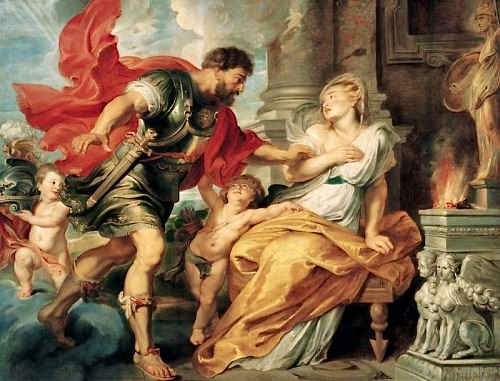
The key points here are that Mars, the god of fire, blood, action and vitality has sex with the fire priestess Rhea Silvia in his sacred grove. She is the female fire principle of vitality, eternity, and sacred blood (pregnancy—the spark of life) that matches Mars. His sacred grounds are fields and forests; hers are mortal power and temples devoted to fire. Rhea Silvia delivers twin boys—Romulus and Remus.
Her father King Numitor gives orders that the infants be killed in the River Tiber. However, the god of the river, Tiberinus, intervenes, placing the twins on solid ground again and enlisting a lactating female wolf to nurse the twins thus keeping them healthy and alive. Eventually a local Latin shepherd finds the twins and he and his wife adopt Romulus and Remus. As adults, the twins decide to found a city of their own, but violently argue over which of the area’s seven hills will be the building site. Romulus kills Remus, thus cementing violence, murder, and fratricide into the identity of ancient Rome.
THE GOD MARS
Mars also governed agriculture, the complete cycle of farming and husbandry, and the defense or protection of the farmed and harvested lands. He “protected the crops and was hence very prominent in the prayers and rituals of the farmer.” Mar’s fire was linked to the vitality of the seeds, the sprouting plants, the health of the crops, and the bounty of the harvest. Remember that nearly everyone had to grow their own food. Overseeing and protecting the entire agricultural process from seed to harvest was successful was Mar’s domain. Romans worshipped Mars and asked for the god’s protection from wild animals, crop failure, and the like. So, putting this in another way, the Roman god Mars was connected to the earth, to food, and to active protection of people being able to survive and thrive.
Within the city of Rome, the large field where chariot races were run belonged to Mars. From this, we can potentially find the symbolism of athleticism, speed, danger, as well as racing vehicles and horses. (In modern astrology, Mars is seen as the planet that determines how we drive our cars and ourselves.) During harvest time, a sacrifice of a horse—equus October—was made to Mars. The purpose of the ritual was “intended to make crops prosper” as well as to mark the return of farmers who returned from fighting in previous military campaigns. In the Religions of Rome, Vol. 1, Mary Beard, John North & Simon Price remark that “agriculture, unlike warfare, was not the direct responsibility of the [Roman] state. Nonetheless, the religious institutions of Rome where much concerned with agricultural success” because “the security and prosperity of the city rested” on that success. They see the convergence of farming and fighting as being accurate to early Roman life. Horses were also key to both enterprises.
As you can see, the god Mars had a number of different attributes and governed some very different areas of human life than what our modern interpretations offer. We do see violence, defensive and offensive actions, along with bloody wounds and death with this association of farmer soldiers, but Mars was not worshipped as the god of war by ancient Romans. So, who was the Roman god of war?
MIGHTY JUPITER, GOD ON HIGH
Really, Jupiter? Modern astrology consistently interprets Jupiter as a benefic planet—a generally benign planet offering blessings and opportunities. Let me be clear, the ancient Romans saw Jupiter as the offering them blessings too. Just not the ones we’re used to associating Jupiter with.
From its inception, Rome worshiped Jupiter above all deities. Scholars show that the Romans primarily viewed and honored Jupiter as the god of politics, war, storms, thunderbolts, the grape harvest, and as “the highest city authority.“ Let’s recall that ancient Romans showed their honor, worship, and fervent attention to the other gods / goddesses—Jupiter, especially—through carefully proscribed actions such as prayers, vota (vows or promises) rituals, animal and plant sacrifices, and festivals.
Beard, North, and Price explain that Jupiter was the god who received war-vows from Rome’s departing general on his way toward war. The vows pleaded for battleground success. A victorious general was always given his “triumph”— a public victory parade /ritual /procession toward Rome’s Jupiter Capitolinus temple and amongst cheering Roman citizens. The general, riding in a four-horse chariot, was brightly “dressed in red and his face painted red, exactly like the statue of Jupiter [. . .because] in some sense, the triumphing general had been deified for the day.” When the red-faced, red-robed “Jupiter” general arrived at the Jupiter Capitolinus temple, he placed laurel wreathes in the lap of Jupiter’s statue and then ordered white oxen be sacrificed to the actual god.
As you can see, some of the attributes as well as the color red that Western astrology typically ascribe to the Roman god Mars were actually Jupiter’s area of influence and power. As we know, Rome became an empire / war machine conquering the Mediterranean and most of Europe, Western Asia and North Africa—over 1,300,000 square miles. To me, this is an example of Jupiterian hubris and inflation to the extreme.
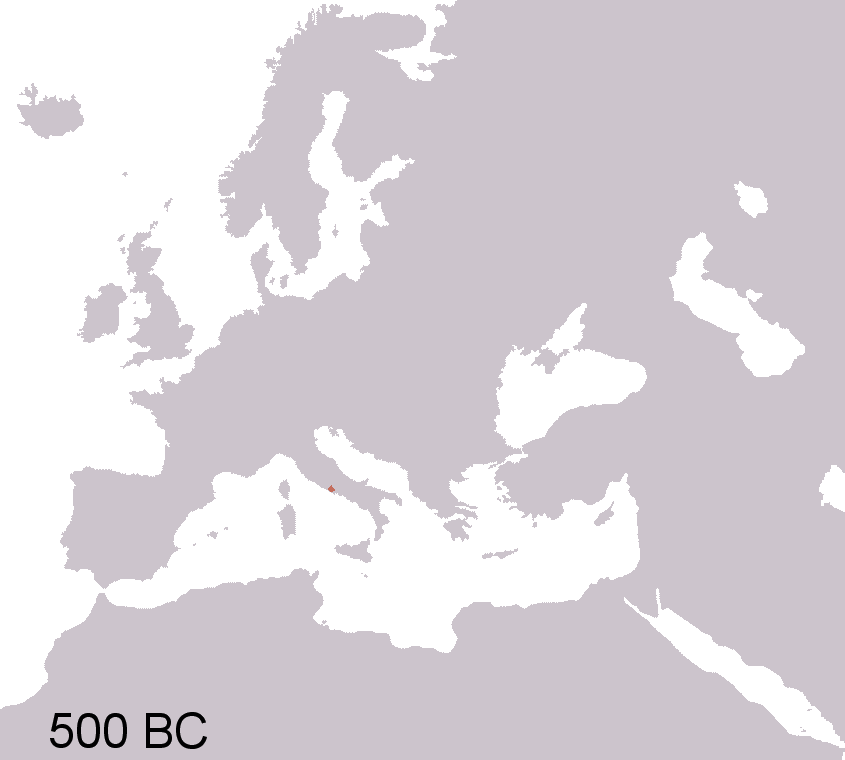
INTERPRETATIONS OF MARS
Naturally, times change. People forget history or remember it, adjust their understandings / interpretations, or perhaps, simply assume that Mars has always been linked to war everywhere in the world.
I hope that this article gives you food for thought. Together we’ve learned much more about how the ancient Roman viewed the god Mars. I think that’s important to know–especially how it pertains to astrology and how Mars is interpreted in our charts. What do you think? Please share in the comments. And if you know about other cultures’ myths and symbolism regarding Mars, I’d love to know everything you want to share, and I bet this whole community would too.
Click on the comments button below.

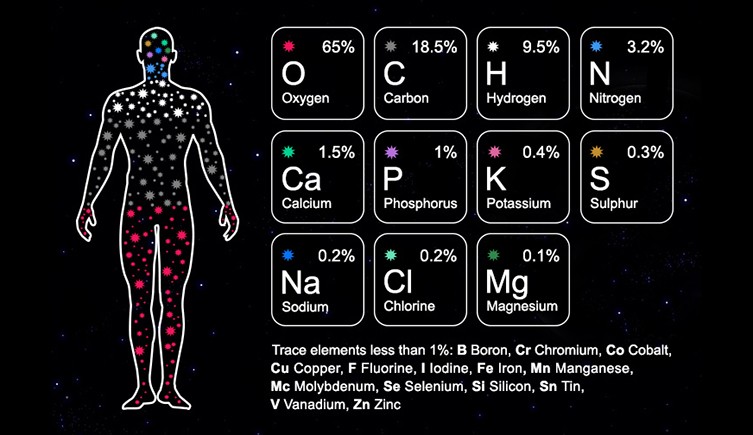


What a fascinating look at Mars! I love how you brought together astrology, history, and mythology to show there’s so much more to Mars than just its warrior side. The way you highlighted Mars’ role as a protector of agriculture in ancient Rome and its fiery symbolism across Asian cultures was truly eye-opening for me. Thinking of Mars in terms of vitality, creativity, and even farming adds such a refreshing depth beyond the usual focus on aggression. Thank you for such an enlightening and thought-provoking read!